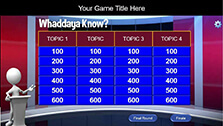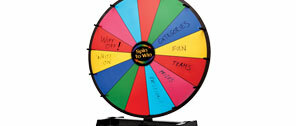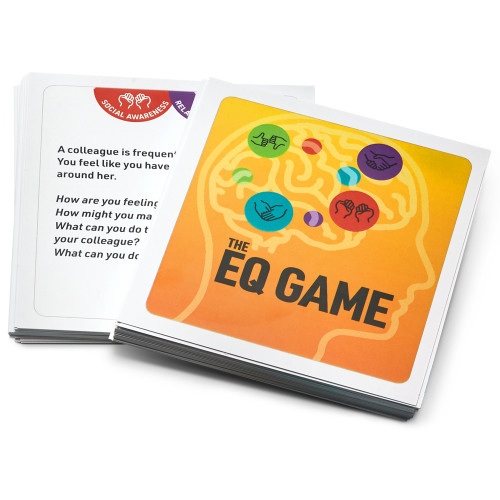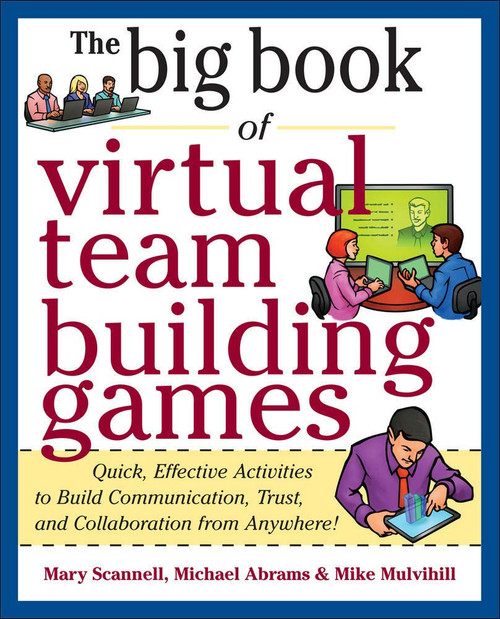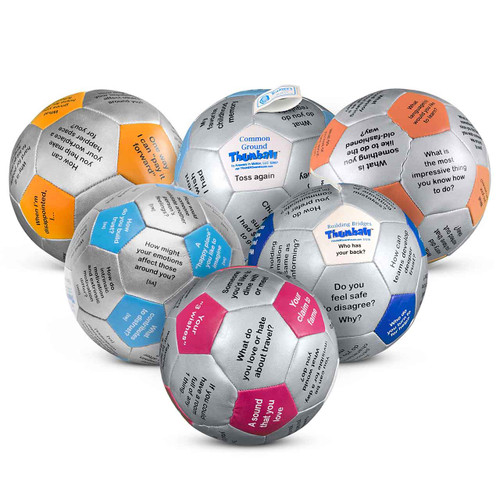Build Emotional Intelligence—wherever you are! Whether you're running a team meeting, virtual classroom, or remote training session, this online version of The EQ Game makes it easy to build emotional intelligence skills from anywhere.
THE EQ GAME * OVERVIEW
-
Purpose: Build emotional intelligence by exploring real-world challenges and identifying skills to navigate them. Foster deep conversations and team connection. EQ Game makes learning the skill of emotional intelligence fun, interactive, and memorable.
-
Format: Online/virtual game—perfect for Zoom, Teams, or other video platforms
-
Time Required: Up to 90 minutes for Parts 1 and 2 combined. However, those with less time can use just a handful of the situations, adapting to their specific needs.
EQ GAME VIRTUAL EDITION * INCLUDES
These 7 files (conveniently compressed into a single .ZIP file) will give you all you need to conduct the game as a single large group experiences, or in the format of 4 breakout groups:
- The EQ Game - PowerPoint deck containing 89 slides
- 20 Situations for Self-Awareness and Self-Management (PART 1 - 40 slides)
- 16 Situations for Social-Awareness and Relationship Skills (PART 2 - 32 Slides)
- EQ Skills Summary (1 slide)
- 16 Slides for intros, explanations, scoring, etc. - you can use this to present and explain the game to participants
- 4 Breakout Room PowerPoint Decks - The full game is split into four parts, in case you'd like to split into 4 smaller groups, and give each breakout a set of situations to explore. Each breakout deck contains a different set of Self-Awareness and Self-Management and Social-Awareness and Relationship Skills slides, but all include the following elements:
-
- 5 Situations for Self-Awareness and Self-Management (PART 1 - 10 slides)
- 4 Situations for Social-Awareness and Relationship Skills (PART 2 - 8 Slides)
- EQ Skills Summary (1 slide)
- 7 Slides for intros, instructions, etc.
- Facilitator Instructions - 4-page pdf
- Participant Handout - 1-page pdf
FACILITATING THE EQ GAME VIRTUAL EDITION
The game is facilitated in two parts. Part 1 builds the first two Emotional Intelligence skills and Part 2 helps develop the second two skills.
PART 1: SELF-AWARENESS & SELF-MANAGEMENT
Focusing on the first two pillars of emotional intelligence, PART 1 presents 20 typical situations that anyone might encounter at work. Each situation includes two slides:
-
Slide 1: shows a scenario with two questions—
- How are you feeling?
- What will you do to manage your feelings?—plus sample responses.
-
Slide 2: answers the questions - by offering additional answers for both questions, players can compare their answers to other typical responses. Reiterate that the answers shown on the slides are there as suggestions. There are never "right" feelings. The goal instead is to grow more familiar with noticing and labeling feelings.
PART 2: SOCIAL AWARENESS & RELATIONSHIP MANAGEMENT
Part 2 adds to Part 1 by asking participants to focus on the second two skills associated with Emotional Intelligence: Social Awareness and Relationship Management. Part 2 presents 16 typical work situations, with the goal of moving from identifying and managing feelings to taking action in ways that reflect social awareness and strengthen relationships.
- Introduction slides
- Slide 1: shows a scenario with four questions
- How are you feeling?
- What will you do to manage your feelings?
- How can you tune into your co-worker?
- What relationship skills can you use?
- Slide 2: answers the questions - as noted above, suggested answers are offered for guidance, not as "final say."
FACILITATING & SCORING THE GAME
FLOW OF THE GAME
- Show the first slide and ask participants to put themselves in the scenario. Read the sample feelings and actions.
- Then ask, “What else are you feeling?”, empahsizing that feelings are one-word emotions (e.g., angry, happy), not thoughts or interpretations.
- After players list their feelings, ask: “How will you manage those feelings?” Read the example.
- Then ask, “What else can you do?” Keep the focus on Self-Management, not problem-solving the situation itself.
- Finally, have teams self-score the round, based on the scoring protocols below.
PLAY AS A GROUP OR IN BREAK-OUTS
LARGE GROUP - If you're playing as one big group, you'll present the Situations one at a time. You can either follow the game sequence or pick and choose your favorites.
BREAKOUTS - Alternatively, participants can work through a subset of Situations in small groups. Each of the four groups will get 5 situations in Part 1 and 4 situations in Part 2.
SCORING THE EQ GAME
- Each time a participant names a feeling or a self-management technique, they get 1 point.
- Each time a participant provides a social awareness action or relationship management technique, they get 1 point.
- Participants can win additional points by:
- Giving an example of a situation they have experienced – 2 points
- Giving an example of an empathetic statement – 2 points
- Participants keep track of their own points.



